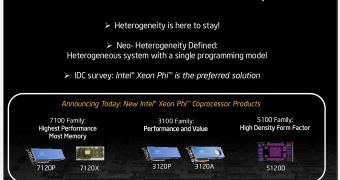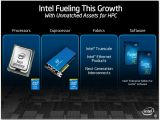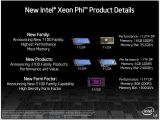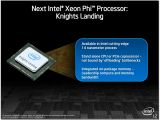The 2013 edition of the International Supercomputing Conference is now underway, which means that Intel has a new range of products to offer its existing and possible future HPC customers.
Before we speak about the newest top supercomputer, some context is needed: Intel has introduced the Knights Landing Xeon Phi PCI Express cards.
There are three new lines. The first, and strongest, is also known as the Intel Xeon Phi coprocessor 7100 family. It includes the 7120P and 7120X, the differences between which aren't readily apparent.
Both of them have 16 GB memory support (twice as previously possible) and 61 cores working at 1.23 GHz each (1.2 TFlops of double precision performance).
The second family of PCI Express cards is called Intel Xeon Phi coprocessor 3100 family and tries to balance performance with cost. It is made of two cards (3120P and 3120A).
The devices use 57 cores (each), clocked at 1.1 GHz, and have 1 TB of double precision floating point performance.
That leaves the Intel Xeon Phi coprocessor 5120D line, which builds on the same concept as the 5100 line launched last year. It is made for high-density servers/data centers and allows sockets to attach to a mini-board (useful in blade form factors).
"Intel is helping to blaze a path toward new innovation, discovery and competitiveness with its supercomputing vision and products," said Raj Hazra, vice president and general manager of Technical Computing Group.
"There is an insatiable demand for more computing power while also achieving new levels of power efficiency. With the current and future generations of Intel Xeon Phi coprocessors, Intel Xeon processors, Intel TrueScale fabrics and software, Intel is uniquely equipped to deliver a comprehensive solution for our customers without compromise."
Knights Landing is meant to offload most of the operations that would otherwise need to be handled by the normal processor cores, much like a GPU Compute accelerator from NVIDIA or AMD would. But because it is still based on x86 architecture, Intel calls this computing solution neo-heterogeneity.
An IDC survey even showed that 78% of those asked what they preferred between Xeon Phi and NVIDIA Tesla said they liked the former better.
Stay tuned as we take a look at the Milky Way 2 supercomputer that leads the newest Top500 list.

 14 DAY TRIAL //
14 DAY TRIAL // 


